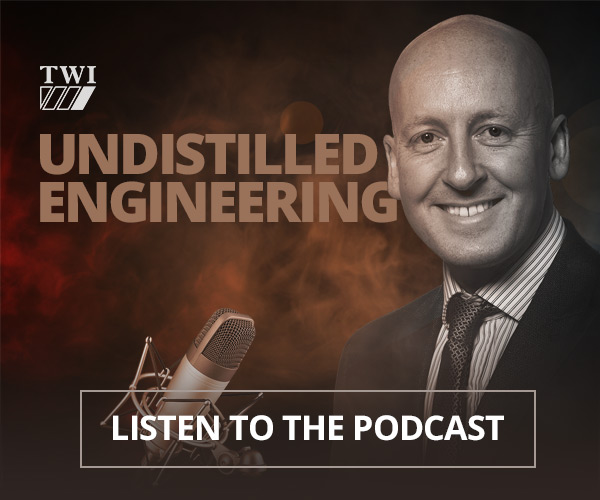Job Knowledge 1
Process terminology
The European standard, BS EN ISO 4063:2010 Welding and allied processes - Nomenclature of processes and reference numbers, assigns a unique number to the main welding processes. These are grouped as follows:
- Arc welding
- Resistance welding
- Gas welding
- Forge welding
- Other welding processes
- Brazing, soldering and braze welding

Each process is identified within the group by a numerical index or reference number. For example, the MIG welding process has a reference number of 131 which is derived as follows:
- 1 - Arc welding
- 3 - Gas-shielded metal arc welding
- 1 - Metal arc inert gas welding
The main arc welding process reference numbers are:
- 111 manual metal arc welding;
- 114 self-shielded tubular-cored arc welding;
- 121 submerged arc welding with one wire electrode;
- 125 submerged arc welding with tubular cored electrode;
- 131 metal inert gas welding (MIG welding);
- 135 metal active gas welding (MAG welding);
- 136 tubular cored metal arc welding with active gas shield;
- 141 tungsten inert gas arc welding (TIG welding);
- 15 plasma arc welding;
The reference numbers are used as a convenient way of identifying the welding process in documentation such as welding procedures (BS EN ISO 15614 series) and welder qualification (BS EN 287 and BS EN 9606 series) records.
Process options
Factors which must be taken into account when choosing a suitable
welding or joining process are:
- material type
- product form: plate or tubular
- quality and strength requirements
- degree of mechanisation
- capital cost
Although consideration of these factors will identify the most suitable welding process, the choice within a company may be restricted by the cost of implementing a new process, availability of plant or current workforce skill. Welding and joining processes available to the welding engineer can be separated into the following generic types:
- Fusion
- arc
- gas
- power beam
- resistance
- Thermomechanical
- Mechanical
- Solid state
- adhesive
- soldering
- brazing
The suitability of the processes for welding and joining materials, joint types and components are shown in Table 1.
Table 1. Suitability of the processes for welding and joining materials, joint types and components
| Process | Index no. | Steel | Stainless | Al | Butt joint | Lap joint | Plate | Tube | Portability | Manual | Mechanised
Automated | Site |
|---|
| Arc |
1 |
Yes |
Yes |
Yes |
Yes |
Yes |
Yes |
Yes |
Yes |
Yes |
Yes |
Yes |
| Gas |
3 |
Yes |
Possible |
Possible |
Yes |
Yes |
Yes |
Yes |
Yes |
Yes |
No |
Yes |
| Laser |
52 |
Yes |
Yes |
Possible |
Yes |
Yes |
Yes |
Yes |
No |
No |
Yes |
No |
| Resistance |
2 |
Yes |
Yes |
Yes |
Possible |
Yes |
Yes |
Possible |
Possible |
Yes |
Yes |
No |
| Friction |
42 |
Yes |
Yes |
Yes |
Yes |
No |
Yes |
No |
No |
No |
Yes |
No |
| Brazing |
9 |
Yes |
Yes |
Yes |
No |
Yes |
Yes |
Possible |
Yes |
Yes |
Possible |
Yes |
| Fasteners |
none |
Yes |
Yes |
Yes |
No |
Yes |
Yes |
No |
Possible |
Yes |
Yes |
Yes |
| Adhesives |
none |
Yes |
Yes |
Yes |
No |
Yes |
Yes |
Yes |
Yes |
Yes |
Possible |
Yes |
In selecting a suitable process, consideration must also be given to the type of application, for example, the portability of equipment, whether it can be used on site, whether it is manual or mechanised, and the overall cost of the welding plant.
Fusion welding processes
When welding using a fusion process, the edges of a component are melted together to form weld metal.
Table 2. Heat source, mode of shielding, thickness range and metal deposition rates for various fusion processes
| Process | Heat source | Shield | Parent
metal
thickness mm | Deposition
rate kg/hr |
|---|
| Arc |
|---|
| MMA |
Arc |
Gas/flux |
1-100 |
1-4 |
| MIG |
Arc |
Gas |
0.5-100 |
1-8 |
| TIG |
Arc |
Gas |
0.1-100 |
1-4 |
| SAW |
Arc |
Flux |
5-250 |
5-20 |
| ES/EG |
Resistance/arc |
Flux/gas |
5-250 |
5-20 |
| Stud |
Arc |
- |
4-20 |
- |
| Gas |
|---|
| Oxyfuel |
Flame |
Gas |
0.6-10 |
1-2 |
| Power beam |
|---|
| Laser |
Radiation |
Gas |
0.2-25 |
- |
| EB |
Electrons |
Vacuum |
0.2-250 |
- |
| Resistance |
|---|
| Spot/Seam |
Resistance |
- |
0.2-10 |
- |
| Thermit |
|---|
| Thermit |
Chemical |
Gas |
10-100 |
- |
Table 2 shows heat source, mode of shielding, thickness range and metal deposition rates for a range of fusion processes. Although fusion welding is one of the simplest joining techniques, problems likely to occur include porosity in the weld metal, and cracking in either the weld or heat affected zone (HAZ). Porosity is avoided by ensuring adequate shielding of the weld pool and, for materials such as aluminium, the addition of filler wire.
Consideration of the joint design and the chemistry of the weld metal will prevent weld metal cracking. HAZ cracking which might be caused by hydrogen, is avoided by using low hydrogen consumables and controlling the heat input and the rate of cooling of the parent metal.
Remember to override URL to include the JK number at the end.
e.g. /radiography-124/
/eddy-current-testing-123/